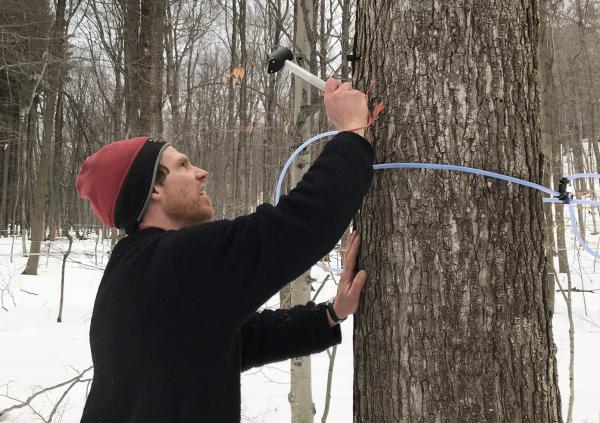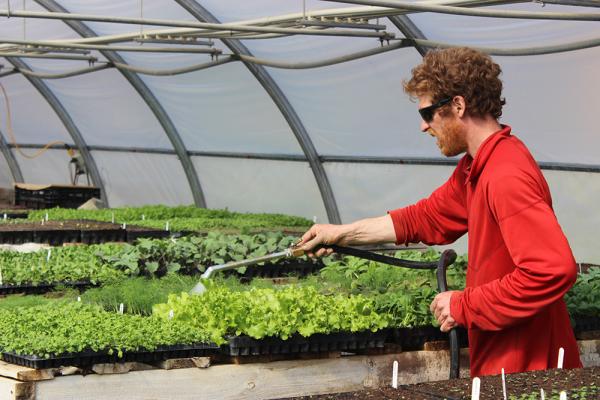Many farm-to-table restaurants have close relationships with farmers who sell them beautiful, fresh produce. But few, if any, have a farmer who grows exactly what they want and need.
In the opinion of this farmer (me), what really sets the Inn at Shelburne Farms’ restaurant apart from other farm-to-table restaurants is the philosophy of incorporating fun and whimsy into the menu.
I grow some of these crops for production because they make sense with our planting plan, or because we’re confident they’ll sell at the Shelburne Farmers Market. But if a crop doesn't make that cut, we may still try it in the Education Garden, because it’s fun to connect kids to food and gardens by growing unusual, edible crops, such as peanuts. This makes everyone happy! Some plants, like hibiscus, may be a complete flop as a vegetable, but make beautiful cut flowers.
As fun as it is to grow lots of different, interesting crops, I get as much enjoyment growing something more common like beets, but doing it really well. Often farmers just enjoy the challenge of growing a crop well and testing their ability to improve from year to year. It could be a simple thing like changing to a different variety or adjusting crop spacing (let’s try four rows on a bed instead of three, but make sure to add a little extra fertility), or streamlining the harvest process by using new harvest knives or bulk harvesting crops that store well in the cooler.
In addition to the fun side of garden planning, like mapping crop rotations, designing the education garden, or looking through seed catalogs (Johnny’s Seeds, High Mowing, Baker Creek), I spend almost as much time finding ways to keep things from killing the crops in our organic garden. That might mean new insect netting to keep away the cucumber beetles, a new organic fungicide to battle powdery mildew on tomatoes, more fencing to keep deer and rabbits away, or beneficial insects to eat spider mites on strawberry plants.
Who knew tarps could be exciting? I recently attended a 6-hour workshop with 200 farmers to learn how to improve soil health and control weeds using old greenhouse plastic and silage tarps (commonly used to cover silage or haylage piles in the dairy industry). By laying the plastic on prepared soil for three weeks before seeding or transplanting, it will kill most of the weeds in the top layer of soil. The tarps are thick and can likely be used for ten years if taken care of and kept away from mice and voles.


